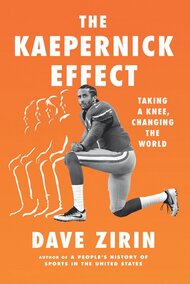The Over-Exposure of Danica Patrick

Does sex – or sexism – sell women’s sports? A new study shows that Danica Patrick’s willingness to show skin is doing her sport a grave disservice.
It has been quite a year for Danica Patrick. She became the first woman to win an Indy Car race, coming in first at the Indy Japan 300 on April 20. She also became the first race care driver to pose for the Sports Illustrated swimsuit issue.
The good people at SI never thought to give us Richard Petty in a speedo, but Danica, bent over in a white ruffle bikini, must for some reason have seemed like a winner. In accomplishing this dubious double play, Patrick has revived a debate as old as Sonia Henie skating figure eights at the 1926 Olympics: Does sex sell—or perhaps more aptly phrased, does sexism sell—women’s sports? Does objectifying women athletes, highlighting their bodies over their skill, putting them in swimsuits or on the covers of yuppie porn like FHM or Stuff, actually increase the interest and fanbase of women’s sports? The debate has always had Faustian overtones: Is it worth turning proud women athletes into frat house cheesecake if it’s for the greater good, the greater exposure, of the games themselves?
Thanks to Dr. Mary Kane, this is no longer a moral question. The sports sociologist from the University of Minnesota has produced a far-reaching study that shows sex certainly does sell, but alas, it sells only magazines, not sports. Kane and her research team showed a series of images of women athletes putting their bodies on display for a wide-ranging focus group of men and women and found out a very basic truth:
“It alienates the core of the fan base that’s already there. Women both aged 18-34, and 35-55, are put off by these images. And older males, fathers with daughters, taking their daughters to sporting events to see their favorite female athletes, are deeply offended by these images.”
As for the young men excited to see Danica in leather, spread out on a car: “They want to buy the magazines but they didn’t want to consume the sports,” Kane says. In the end, she feels the research is unequivocal: “Does it increase the interest in women’s sports? At least for the seventy-plus people we spoke to, the answer is a resounding no. It does not.”
This should be an earth-rattling revelation for every executive in the Women’s Tennis Association, the WNBA, and the LPGA tour, who have for decades thought that a little leg goes a long way. Without their leadership, Maxim and company would have to be content with whatever half-wit from the Hills strolled into their studios half-naked that week. But the leadership of women’s sports, as Kane argues pervasively, will need more than logic to move away from the abyss of abject objectification.
“This is deeper. This is also about what runs in the bone marrow of women’s sports, namely ‘homophobia.’ They are very well meaning but they also want to distance themselves from the ‘lesbian label,’ ” she says. “How do you do that? You reassure the viewing audiences, the corporate sponsors, the TV networks and the female athletes themselves, that ‘no, no, no, sports won’t make your daughter gay.’ Women’s sports will be more acceptable if you believe, even though it is stereotypical and inaccurate, that if you are pretty and feminine in a traditional sense then you are not gay.”
In other words, it’s not Danica and her half-clothed athletic sister that drive this machine. It’s driven by corporate sponsors and homophobia.
But what about the women who say that provocative poses are about celebrating their bodies, and celebration of the body beautiful has been a part of sports since ancient Greece?
Kane answers, “What muscle group do bare breasts belong to? You can show off your body without being naked in a passive, sexually provocative pose.”
The message to Danica Patrick couldn’t be clearer: By using sex and skin, you’re not selling your sport. You’re only selling out.
More columns ⇒
Support the Work
Please consider making a donation to keep this site going.
Featured Videos
Dave on Democracy Now!

